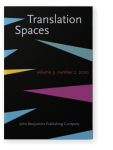Vol. 9:2 (2020) ► pp.202–223
Translation and the narratives of legitimacy
A semiotic analysis of the UN Special Envoy for Yemen’s legitimacy-constructing strategies and their Arabic translations
How legitimacy narratives in conflict zones are constructed and mediated through translation remains largely under-researched. This article investigates the strategies that the United Nations Special Envoy for Yemen, Martin Griffiths, uses to construct narratives of legitimacy for the Houthi movement in his Security Council briefings on the conflict in Yemen and their Arabic translations. Using a combination of a narrative framework, which highlights the notion of agency, and a semiotic model of triadic signification, which highlights motivatedness in signification, this article identifies metonymization as a strategy in constructing such narratives of legitimacy, with three additional sub-strategies of labeling, naming, and selective appropriation. While the Arabic translations are generally faithful to their originals in terms of the strategies used, some demonstrate a remarkable departure from United Nations translation norms. These findings shed light on theoretical issues of translator agency under such norms, and the pedagogical implications of such agency are addressed.
Article outline
- 1.Introduction
- 2.Narrative and framing
- 3.A semiotic model of framing
- 4.Material
- 5.Metonymization
- 5.1Labeling
- 5.2Naming
- 5.3Selective appropriation.
- 6.Conclusion
- Acknowledgements
- Notes
-
References
